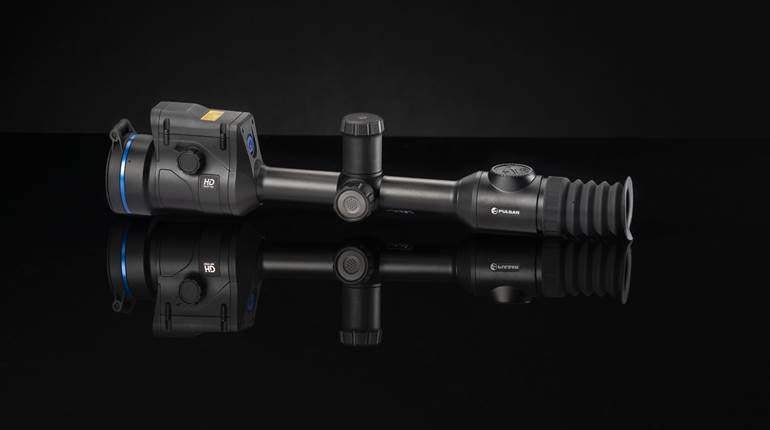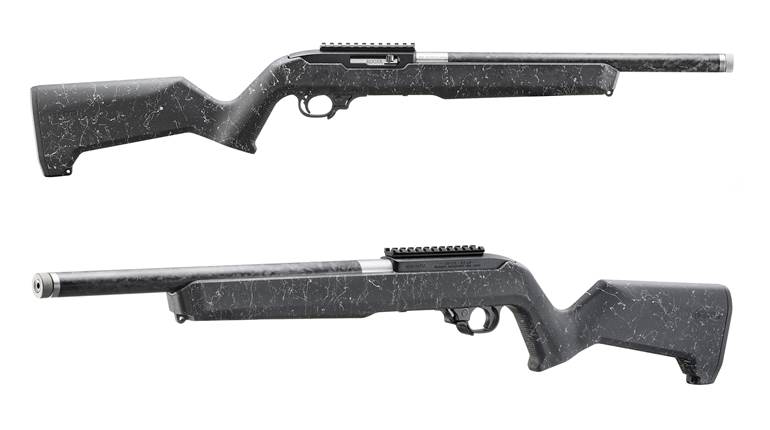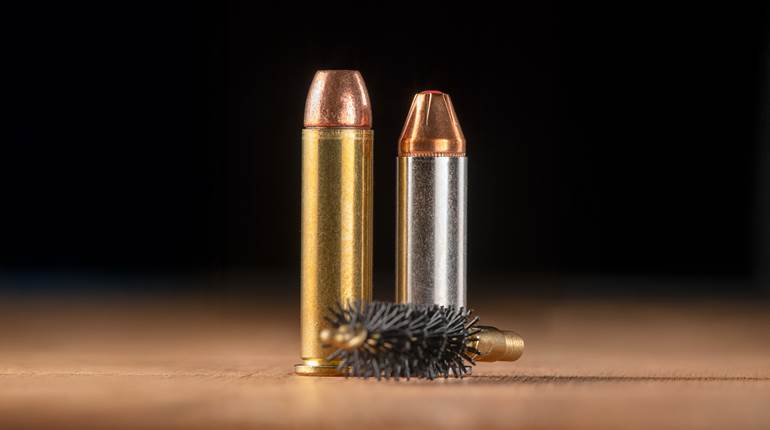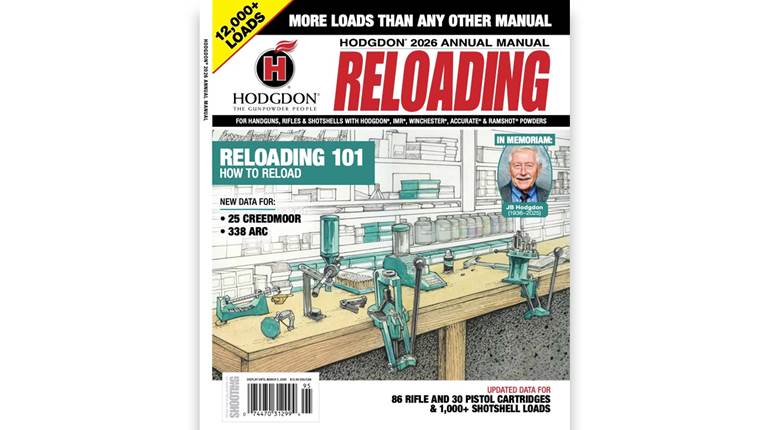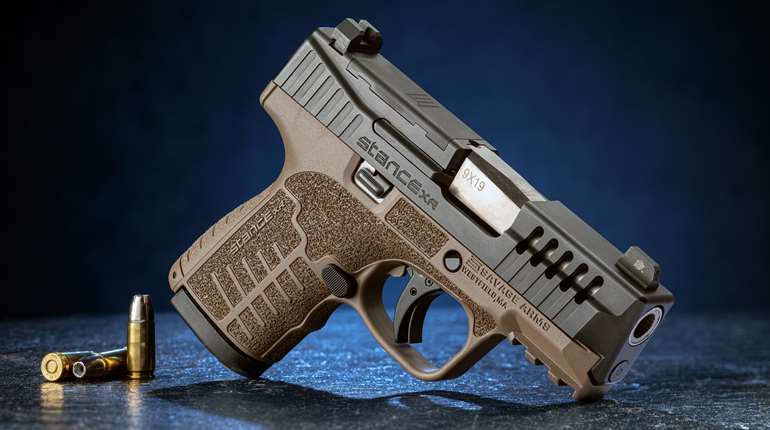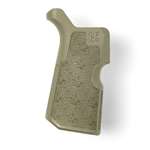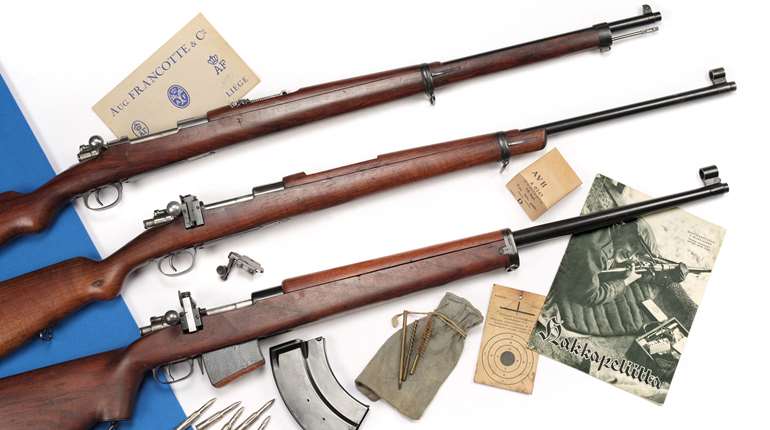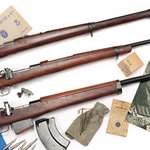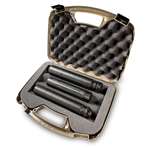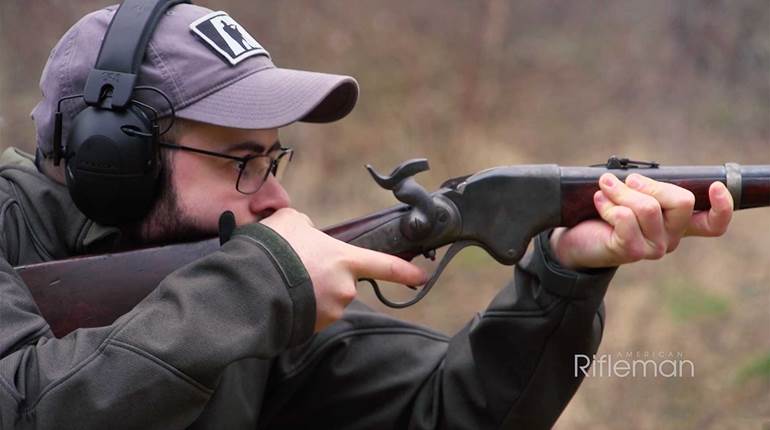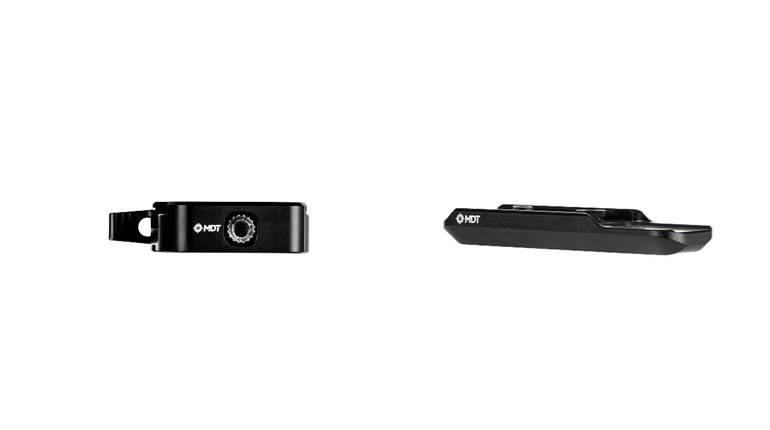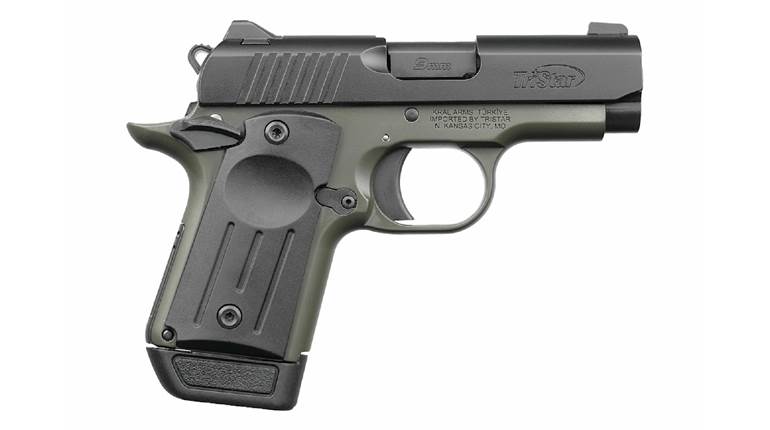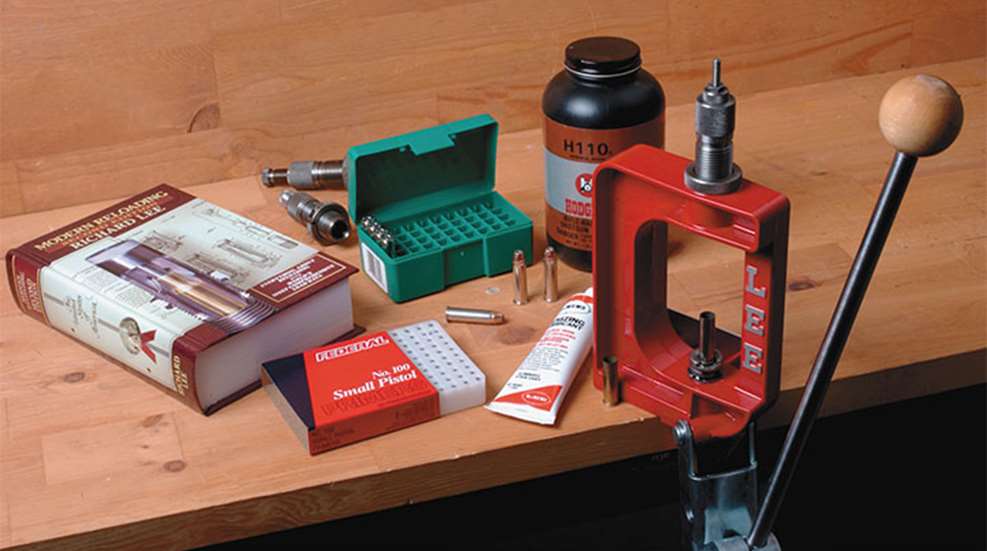
All S&W did was follow a trend that was established before the turn of the (last) century: making a cartridge case longer. We can find .32 Long and Short Colt and Smith & Wesson, or .38 Long and Short Colt. We have to be careful because the .38 Smith & Wesson is not simply a shorter .38 Special, it has a considerably larger case diameter, although the bullet is the same size. The .44 Russian was lengthened to become the .44 Special and so on. But the important thing to know is not that the .357 Mag. is longer but rather that it operates at pressures far above those previously used in cartridges that trace their ancestry to blackpowder days.
Some folks mistakenly believe that the addition of 0.135” more case, often referred to as 1/8” although it's a bit more, is the reason for the .357 Magnum's dramatic increase in power. The fact is that case length doesn't have much to do with it. Folks such as Elmer Keith and Phil Sharpe were routinely handloading cartridges that were equivalent—if not even above—today's .357 Mag. factory ammo in .38 Spl. brass.
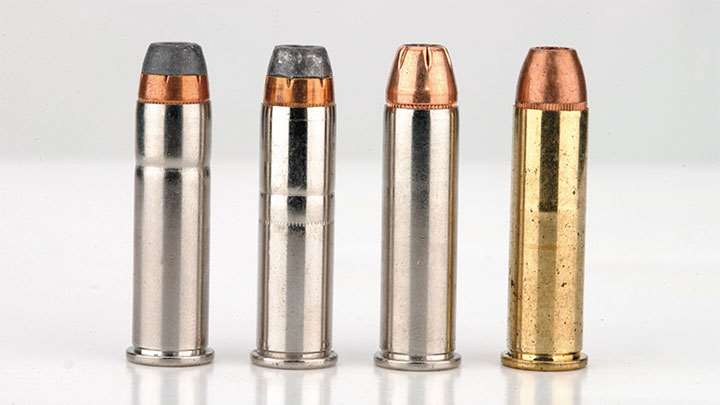
They were shooting such ammo in Smith & Wesson's .38-.44 Outdoorsman revolvers, which were simply .38s built on the N-frame used for its .44 Special Hand Ejectors. In the early days, the powder of choice was Hercules (now Alliant) 2400 in substantial quantities. For a brief time, the factories produced .38-.44 High Velocity ammunition that approached .357 Mag. velocities.
The word "Magnum" is accepted as originally describing a bottle of champagne that was twice as large as the customary 750 m.l. size. Obviously the .357 Mag. isn't twice as large as the .38 Spl., but the pressure can, indeed, be twice as high. Smokeless powder .38 Spl. loads today have a limit of 17,000 p.s.i., whereas the .357 Magnum's is 35,000. Historically .357 Mag. pressures may have been even higher; and if you shoot one of those old .357 Mag. loads with a 158-gr. lead semi-wadcutter bullet and a large pistol primer, you know you've been present at something rather spectacular.
The real benefit that came along with the .357 Mag. was incredible versatility for a handgun cartridge. It is also a cartridge that is misunderstood, misused and that can abuse both gun and shooter. Smith & Wesson has always led the way in the development of more powerful revolver cartridges, but if you go back and read some of the early writings about the .357 Mag. you would think that we had gone as far as we could go.
Some writers cried that it would take the arm off of both shooter and shootee. If they had only known. Today's shooter probably thinks the .357 Mag. is relatively puny and, if he compares it with the .44 Mag., .454 Casull, any of the Linebaugh cartridges, the .480 Ruger or the new .500 Smith & Wesson, he'd be right. But the .357 Mag. is still hot enough to be both blessing and curse.
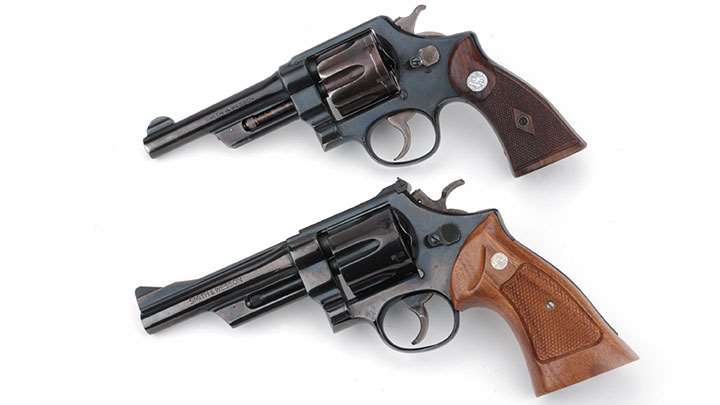
There is no doubt that it has turned legions of would-be shooters into flinching trigger-jerkers because nobody told them they didn't have to shoot full magnum loads. We still get letters asking if it is safe to shoot .38 Spl. ammunition in a .357-Mag.-chambered gun. The confusion is understandable, because a beginner would have no way of knowing that the .38 Spl. and .357 Mag. actually use the same bullet and case body diameters.
Any handgun that has substantial recoil and muzzle blast is difficult for a beginner to shoot well, and that effect is multiplied many times for those who are forced to shoot on an indoor range. It is normal for the human body to try to avoid loud noises and painful blows, so we must teach ourselves to overcome those perfectly normal reflexes if we are ever going to reach a significant degree of shooting proficiency. One way to do that is to begin with mild .38 Spl. target loads.
Today's armed citizen is quite reasonably concerned about home and personal protection, and the .357 Mag. has an excellent reputation in that category. Many agencies issued guns chambered for the .357 Mag. but issued .38 Spl. ammo for duty use. Some authorized instructors or other specially qualified officers to use magnum ammo, but in large departments that was generally rare.
It is interesting to see how the tide turns in the area of defensive handgun training. Revolvers are still very popular for both discreet carry and home use, but when you ask trainers for ammo recommendations, the most common seems to be some form of +P .38 Spl. And this is yet another source of confusion. The designation "+P" indicates a load that produces higher pressures than standard ammo but is still far below that of the magnum.
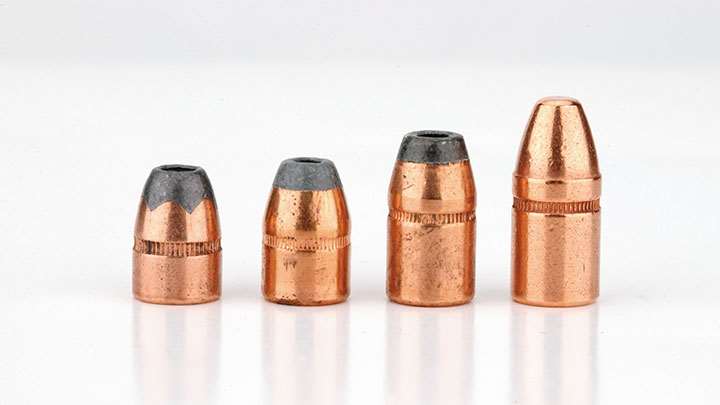
The good news for handloaders is that a .357 Mag. revolver can shoot anything from the mildest target loads up to bullet weights and loadings that are entirely suitable for deer-size game at close range. One of the common questions is whether or not it is safe—or wise—to load really mild ammo in the .357 Mag. cartridge case. The answer to that is not easy. Any time we use a powder charge that occupies only a small fraction of the available space, we open up the potential for a messy can of worms: position sensitivity. A light load that is perfectly happy when the powder is back toward the primer may stick a bullet in the barrel if the position is reversed.
There is another issue that is sometimes overlooked. It is potentially dangerous to have a cartridge loaded with a charge that is not appropriate for the headstamp. While there is surely enough capacity in a .38 Spl. case for .357 Mag.-equivalent loads, that cartridge could be dangerous to shoot in an old gun only equipped to handle blackpowder-equivalent .38 Spl. pressures. The same argument can be made against loading .44 Mag.-equivalent ammunition in .45 Colt cases. The headstamp does not accurately describe the cartridge; so even though the handloader's intent is to make ammo only for his own use, we all know Murphy's Law. If something can go wrong, it will.
One area where the .357 Mag. is perhaps forgotten is in the hunting field. We are conditioned to think that we need the biggest, baddest handgun to hunt deer, but that simply isn't so. If, as we are told, the .357 Mag. is the best manstopper there is, why then would it not also be best for game of roughly the same weight? Not many whitetail deer are larger than the average human, so a well-placed shot with a good bullet should be more than adequate and bring to the table the advantage of less recoil and perhaps a flatter trajectory.
While the 125-gr. load has always been touted for defense, a hunter might want to look at heavier bullets. We now have 180-gr. bullets, but there are also many good bullets in the 158-gr. weight that were chosen for the original loading so many years ago. If a good 158-gr. JHP trucking along at 1200-1300 f.p.s. doesn't do the job with a well-placed shot, I'm not sure anything else would do better. While it is true that a 110-gr. bullet can be pushed close to 1700 f.p.s., I've never found any magic there. Light bullets lose velocity more rapidly in both air and tissue, so penetration may not be enough for game. They are great for making watermelons into juice, but I don't care for them otherwise.
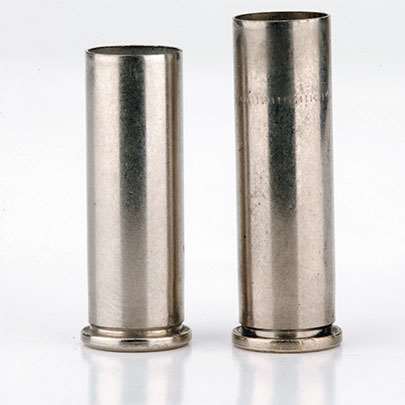
Maximum velocities are obtained with powders most of us think of as "magnum" handgun powders, such as Alliant Blue Dot, Ramshot Enforcer, Winchester 296 or Hodgdon H-110, but the cartridge is very versatile and can be loaded with almost any powder from Bullseye up to the magnum stuff. It takes nearly a caseful of the slower powders to reach the real potential. Maximum charges of H-110 have proven to normally give the highest velocities, but are also very lightly compressed when a bullet is seated. If you load on a progressive tool be aware that it is possible to sling some powder out by centrifugal force as the shell plate turns if you do it too quickly.
A lot of people believe that loading the .357 Mag. requires the use of magnum primers. That is not always true. Unless you are loading with one of the so-called magnum powders such as Winchester 296 or Hodgdon H-110, they are not necessary. Blue Dot, for example ignites perfectly well with standard primers and suffers no loss of velocity. The thing to do is follow the recipe in the loading manual.
One of the issues with any magnum handgun cartridge is how much to crimp it. A firm crimp is required for good ignition with full-charge loads of the slower powders. The simplest way I've found is just to eyeball a factory load crimp and duplicate what you see there. If serious accuracy is part of your agenda it might be worthwhile to try Redding's Profile Crimp die, which gives a combination of taper and roll crimps in the same die. My experience has shown that accuracy often improves when it is used.
One of the things handloaders like to do is save money, and the least expensive bullets you can get are almost always cast or swaged lead. They often create a problem if, at the same time, you want the fastest magnum loads. Lead bullets and high velocities often result in the bullet leaving some of itself in the bore. Leading is a curse that is much easier to avoid than cure.
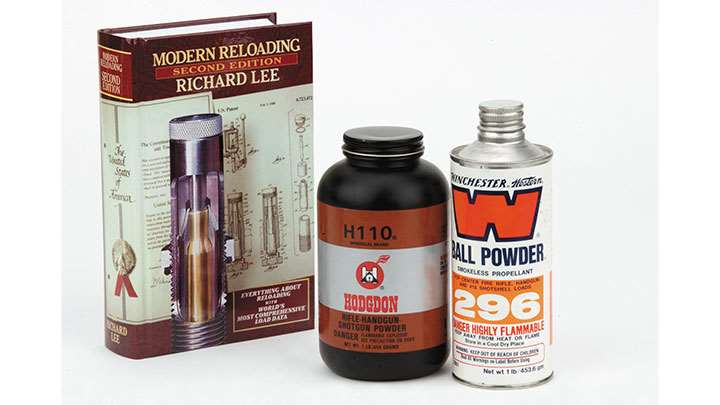
You can spend hours removing lead from a barrel or you can avoid it altogether by using jacketed bullets for the hot stuff. To be sure there are gas checks that eliminate most leading, but if you're buying bullets, they are at least as, if not more, expensive than jacketed commercial stuff. Now if you are casting your own, that's different because gas checks are easily applied in the sizing process.
One of the interesting developments in factory .357 Mag. ammunition was the offering of "medium velocity" loads. Typically these had 158-gr. lead semi-wadcutter bullets loaded to around 1000 to 1100 f.p.s. and were a great addition to the shelf. They had more "oomph" than the hottest +P .38 Spl. load but considerably less than the full charge magnum stuff. Loads like these are a snap for the handloader to duplicate and give the sense of shooting a magnum with just a little less wear and tear on gun and shooter.
My practice has always been to have three classes of loads: target, which are loaded in .38 Spl. cases, medium and full charge in magnum brass. One continuing question is whether or not shooting .38 Specials in a magnum chamber has any detrimental effect on the gun. The answer is no. There does not seem to be any difference in accuracy due to the shorter case. There is only one small drawback. If you've been shooting .38 Specials and want to go up to magnum ammo, extraction may be a little sticky due to the fouling left in the forward part of the chamber. This is easily corrected with a dry brush.
One of the more difficult aspects of loading the .357 Mag. is powder selection because there are so many choices. My tendency is to use three different classes of powder. For the target loads in .38 Spl. brass, my choices are Bullseye, 231 or Titegroup. At the top end of the scale H-110, 296, Blue Dot or Ramshot Enforcer are fine, but those may not be the best for medium loads. For those my picks begin with old standby Unique or Power Pistol from Alliant, Accurate No. 5 or HS-6.
The .357 Magnum is a wonderfully versatile cartridge and probably comes as close to "do everything" status as any other.












